Meet the Mycologist Stopping Ocean Plastics, One Mushroom Buoy at a Time
A surprisingly buoyant material, mycelium can help aquafarmers and fishermen end their dependency on plastic gear.
Meet the Mycologist Stopping Ocean Plastics, One Mushroom Buoy at a Time
A surprisingly buoyant material, mycelium can help aquafarmers and fishermen end their dependency on plastic gear.
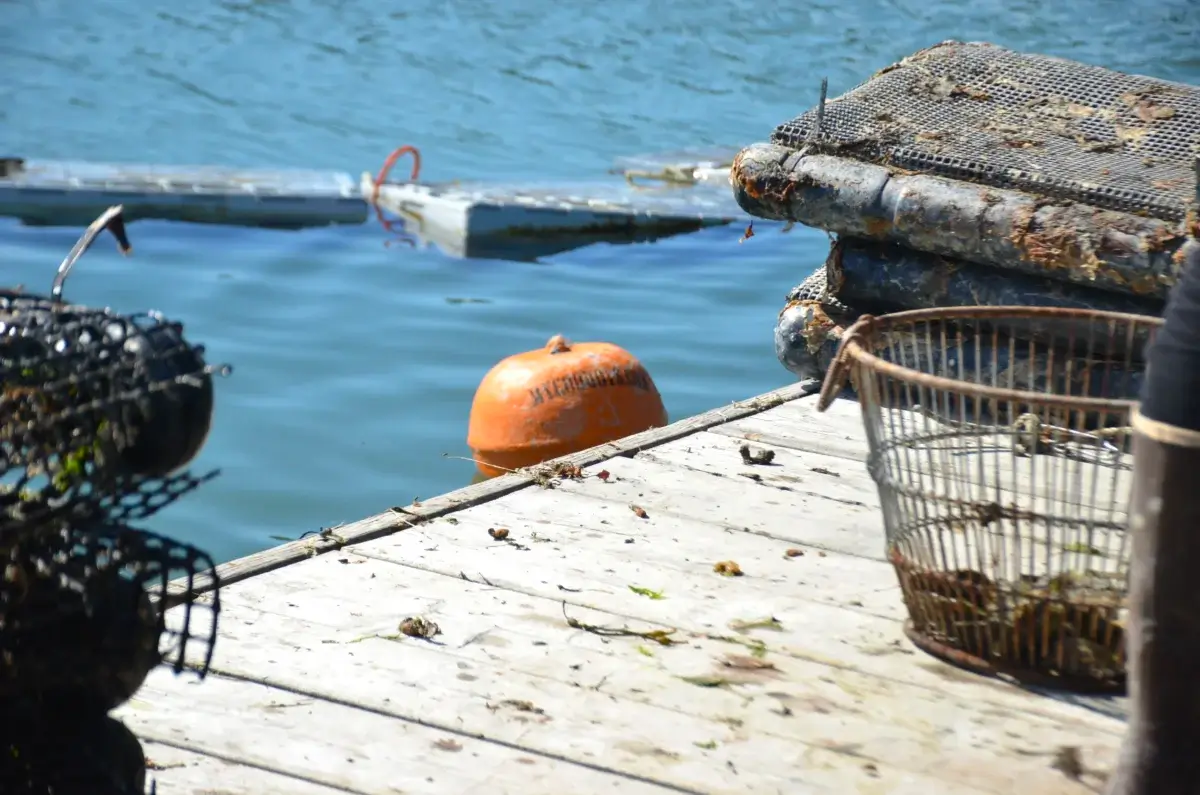
A floating Mycobuoy designed for boat moorings. by Kirsten Lie-Nielsen
Today’s oceans are littered with plastics. Tiny microplastics, often invisible to the naked eye, swirl in our tidepools. Large pieces of plastic debris stretch across stretches of open sea. The majority of the ocean’s plastic pollution comes from land-based sources, but nearly 20 percent originates in the fishing industry. Gear is lost overboard, lines snap and drop waste into the sea, pots and buoys are abandoned, and bits and pieces of fishing and aquaculture float away.
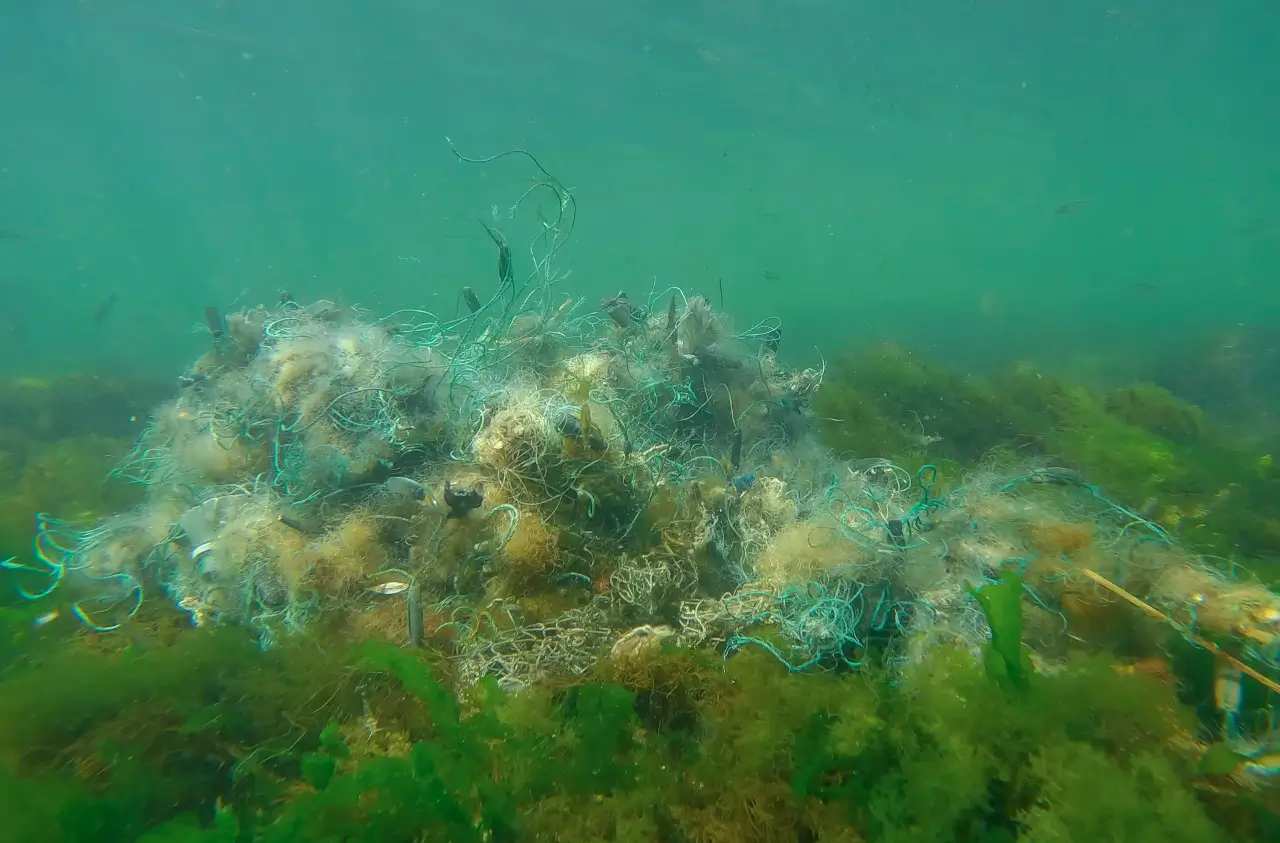
Buoys are a key component of aquaculture and fisheries—there are hundreds of thousands used in the United States alone. The buoy market, already a multi-billion-dollar industry, continues to expand by 5.5 percent each year thanks to increased interest in aquaculture farming. These buoyant orbs come in all shapes and sizes and help to moor lines, mark objects, and signal navigation. In the long history of ocean farming and exploration, we’ve used wooden buoys, cork ones, and iron ones. But today, the majority of buoys on the ocean are made from styrofoam or other polystyrene and polyethylene plastic compounds. There are thousands of buoys in use for weather and navigation alone, and every lobsterman and oyster farmer uses several dozen at a minimum.
Lost plastic buoys float on the currents and join the tonnes of plastics that now cover as much as 40 percent of the world’s seas. Bits and pieces of plastic buoys break off or disintegrate in the ocean sun, joining billions of pieces of microplastics that end up in our seafood.
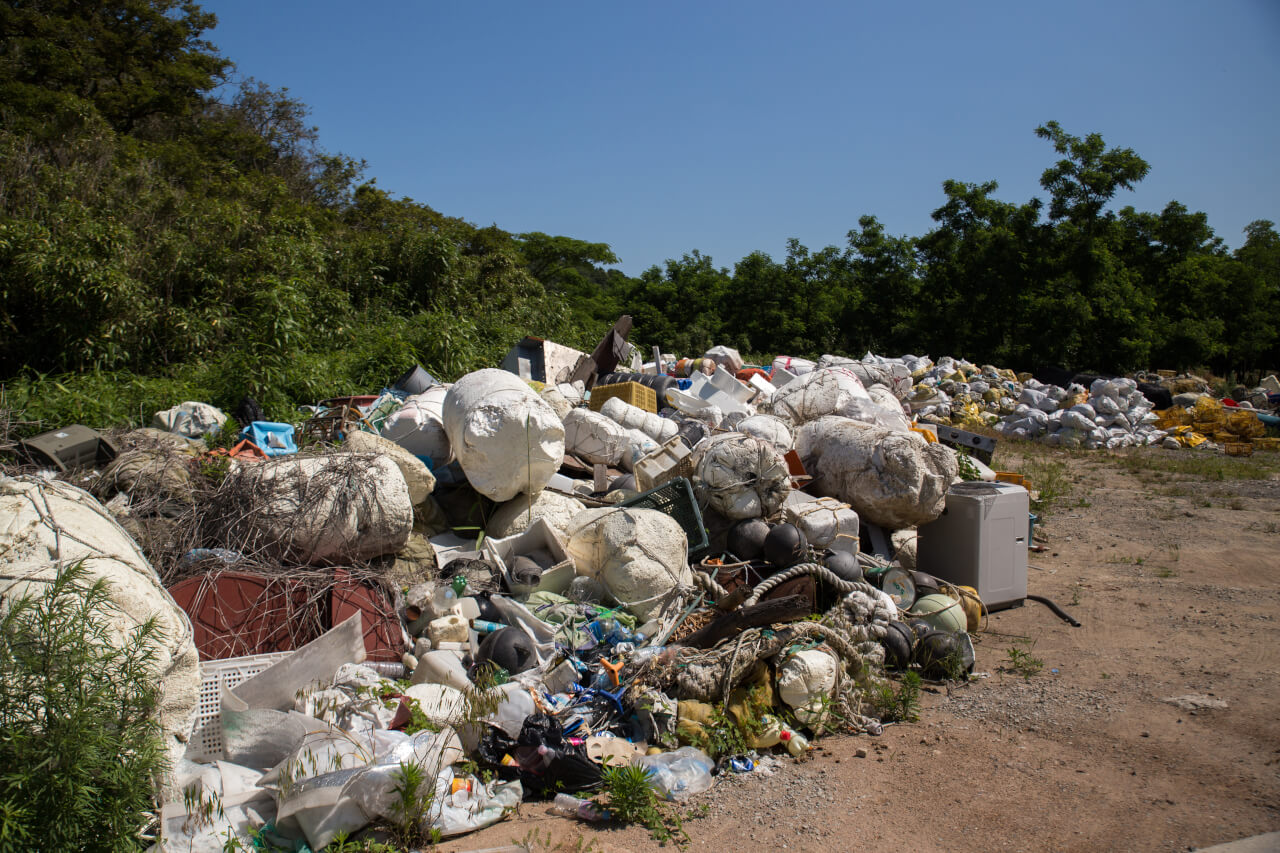
You cannot have aquaculture without buoys—but you can have buoys without plastic. Sue Van Hook had a lifetime of expertise in fungi when she joined Ecovative Design as the mycologist in 2007. Ecovative Design is a technology company focused on using mycelium—the fine white vegetative filaments of fungus—to solve human needs. After discovering early on in her research that mycelium would float, Van Hook quickly realized the potential for creating buoys.
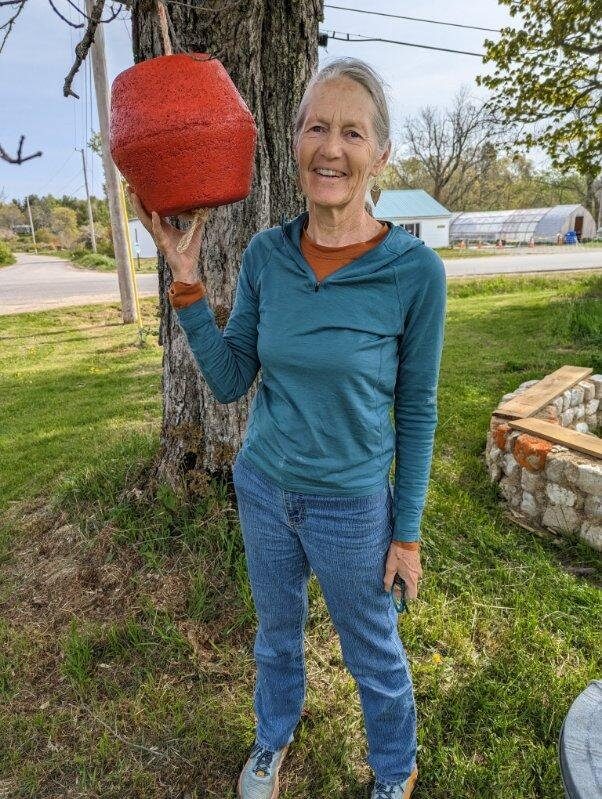
“My grandfather turned his lobster buoys on a lathe in the ‘50s and ‘60s on North Haven Island,” says Van Hook say, remembering her very first introduction to aquaculture’s wooden floatation devices. “I watched him do all that, all those years ago, and we helped paint the colors on and all of that stuff. And then I watched the whole ocean turn to Styrofoam, which at the time seemed fine, right? It was cheaper. They didn’t have to go through all of that labor of crafting this beautiful thing individually, and they lasted a long time.”
As an adult, Van Hook had become a professor of environmental studies and focused on mycology, which she taught at Skidmore College for 18 years. Now observing the buoyancy of mycelium, it didn’t take her long to remember her grandfather’s lobster buoys and their shift to Styrofoam—and to realize the environmental impact of an ocean full of Styrofoam buoys. She set to work designing and growing mycelium buoys.
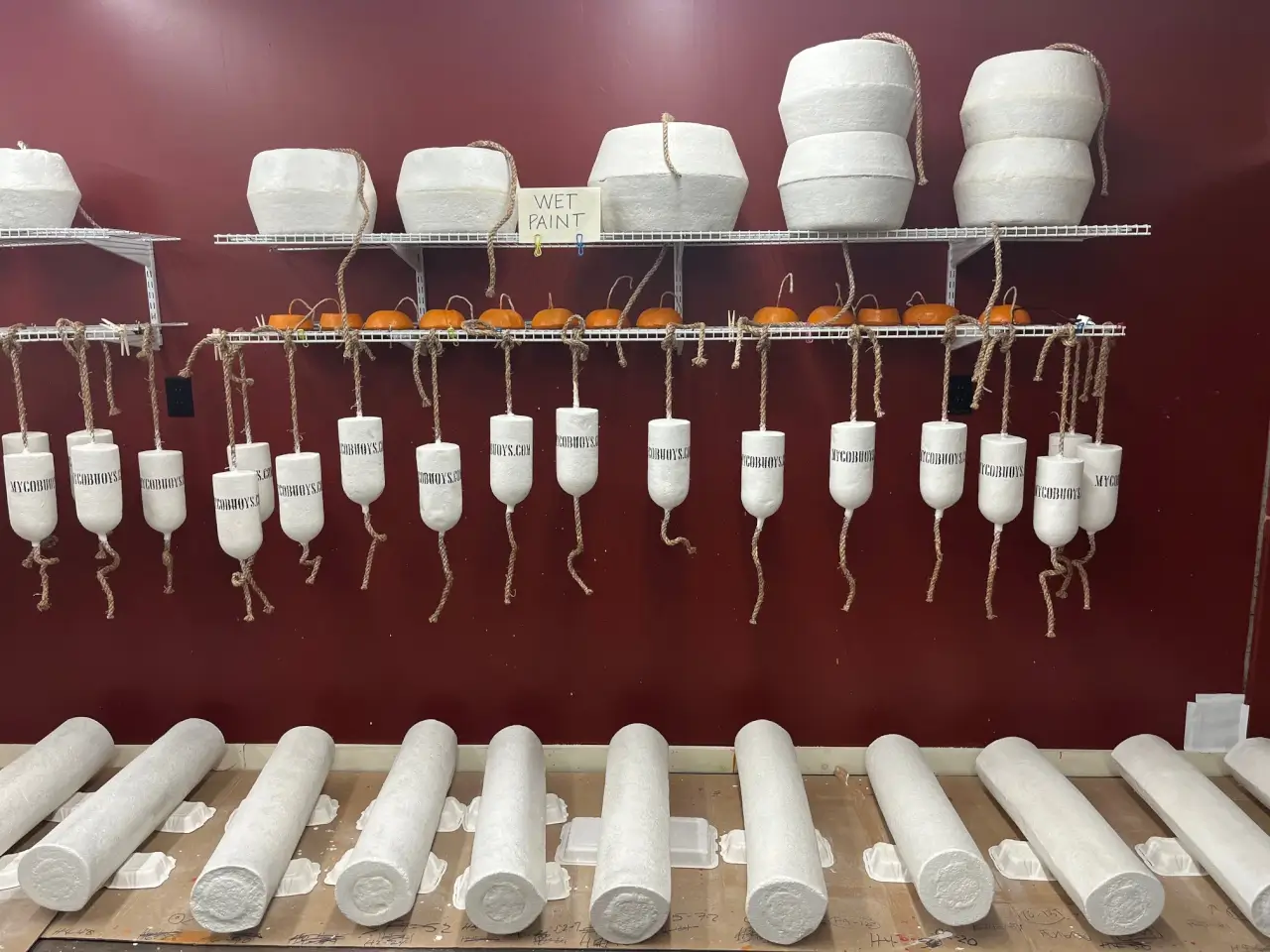
Now the founder and CEO of her own company, Mycobuoys™, Van Hook has pioneered the fungus alternative to plastic buoys. To make her buoys, Van Hook will take a rope of pasteurized hemp and inoculate it with a low percentage of mycelium wood rot fungus. The fungus will then grow, spread and take up whatever space it is given to fill. Originally, she used empty soda bottles, and today, she has prototypes up to the size of mooring buoys more than two feet in diameter.
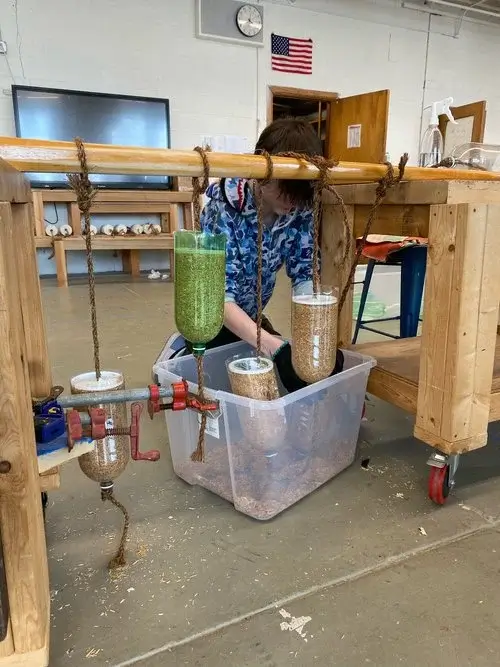
Van Hook has run into challenges finding the perfect fungus for the job, and she continues to work on the durability of the buoys. “We use wood rot fungus,” she says, explaining that the type of mycelium that creates sturdier, more perennial mushrooms like reishi is more suited to the job than the lawn fungus that grows many culinary mushrooms. She has tested dozens of strains of fungus, and she continues to work through varieties in buoy trials.
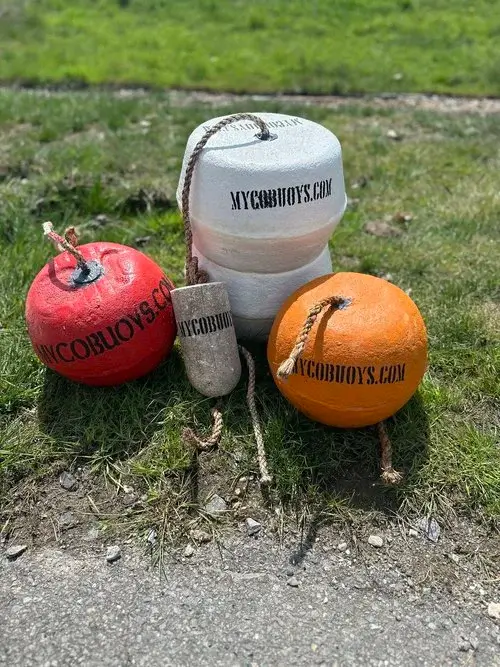
Currently, Van Hook’s Mycobuoys™ are being tested at 11 oyster farms, shellfish hatcheries, and ocean schools throughout New England and New York. Her goal is to be able to guarantee the buoys for a full season before offering them for retail sale.
Abigail Barrows was one of the first oyster farmers to trial Van Hook’s Mycobuoys™. Barrows has a background in marine biology and studies ocean microplastics. In 2015, she bought the lease on Deer Isle Oyster Company with a goal of turning it into a plastic-free oyster farm.
“We were blown away by the process,” Barrows says of her early experiences with mycelium buoys. “It was really exciting to grow something and then have this product which is so functional. And we were pretty excited about the potential application as we started our sea trials.”

The greatest challenge for Mycobuoys™ and those trialing the buoys is their durability. In addition to their hard plastic bodies, many of today’s buoys have thick toxic paint shells. To create a durable shell for a Mycobuoy™, both Van Hook and Barrows have experimented with natural paints that will protect the buoys from the sun, curious birds, and the hard use inherent in ocean farming.
“We are still looking for a more rugged coating,” explains Barrows, who has used pine tar and linseed coatings and linseed based paints on the buoys. “That would give them more robustness, because boats are going to bang into them, so we need to protect them for more than a season.”
“We are trying to find that beautifully environmentally friendly coating to prolong the life of the buoys,” says Van Hook. Today’s plastic lobster buoys do not last forever—at least not as functional aquaculture tools. Most lobstermen and oyster farmers will use a buoy for 20 or 25 years. Van Hook’s goal for Mycobuoy™ durability is a little bit shorter.
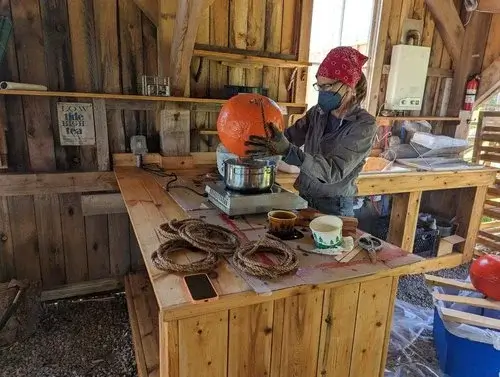
“My ideal business plan is that we grow the buoys every year,” she says. “You buy your buoys at a reasonable price, you have it out there floating your cages for a year, and at the end, we buy it back from you and dry it, grind it ourselves for fertilizer or you could compost them in your own garden.” Van Hook uses old mycelium buoy prototypes in her garden, where she never has to add fertilizer or composite thanks to the nutrition of the fungus.
“You wouldn’t have to store [the buoys] in your driveway or your yard,” Van Hook continues, referring to the large piles of buoys that spring up on fishermen’s lawns during the off-season, “where all that UV light deteriorates the polyethylene plastic that they are currently using faster.”
Recent legislation in South Korea will ban the use of styrofoam buoys by 2025, and Van Hook believes that other nations will soon follow. Van Hook hopes her buoys will retail around 10 percent to 20 percent above current plastic buoy prices and believes increasing restrictions on plastics will only make the mycelium option for buoys more appealing. Styrofoam and plastic buoys average between $20 and $50, depending on size, while the cost of Van Hook’s buoys will depend on the ability to scale up production and the solution to the problem of a durable coating. Those interested in helping Van Hook trial Mycobuoys™ can reach out to her via her website for 2025 buoys.
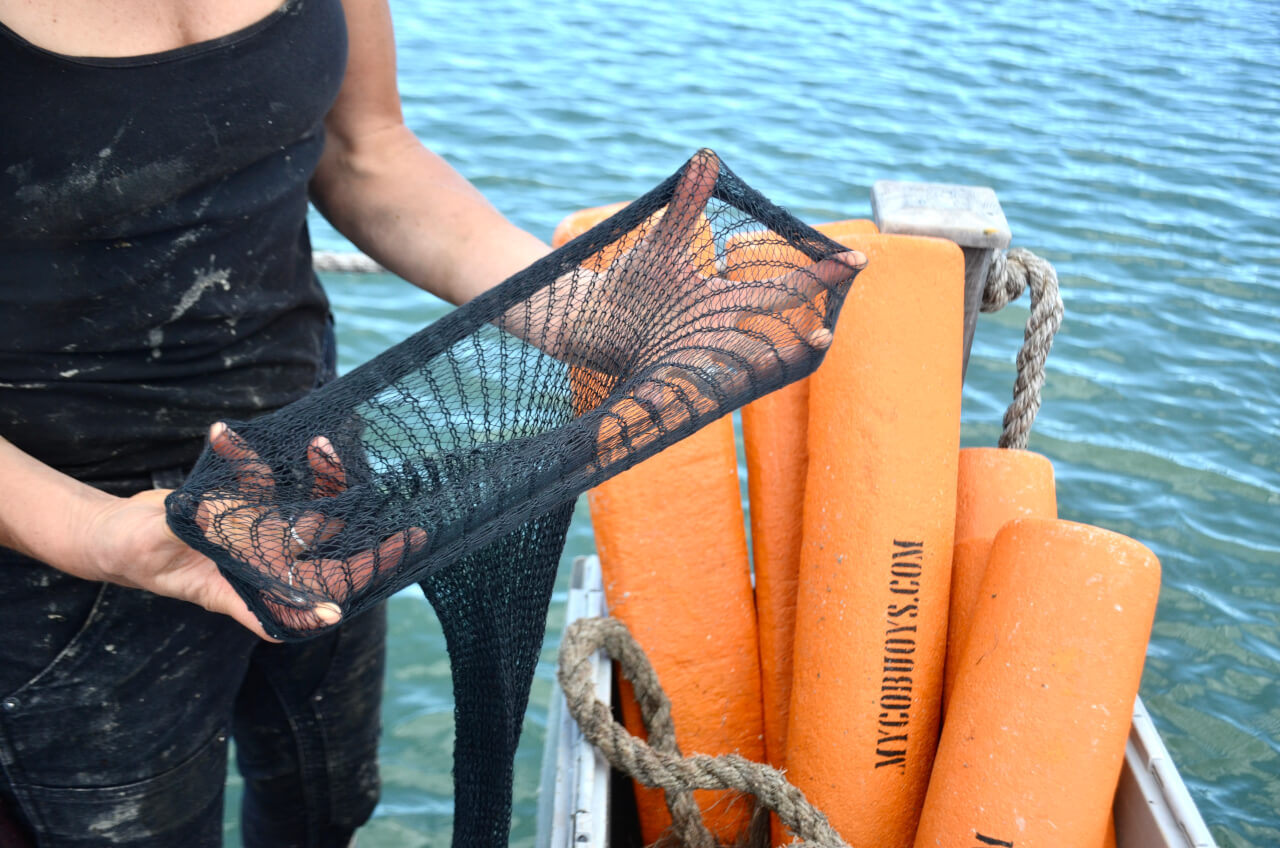
As oyster farmers such as Barrows continue to trial buoys and Van Hook expands to more shapes and sizes, the future of Mycobuoys™ is bright. On her quest to reduce ocean plastics, Van Hook may have stumbled on to an answer for more than just buoys.
“There is just so much potential here,” says Barrows.
Plastics can be found in almost all fishing gear, from nets to floatation systems in boats. The Great Pacific Garbage Patch is almost half what is called “ghost gear,” fishing plastics lost overboard or abandoned. In addition to Mycobuoys™, Barrows works on prototypes of wooden oyster cages, and she sells her oysters in compostable beechwood bags from a new company called Ocean Farm Supply. “We need to think outside of the box, in terms of using them for mooring balls, other kinds of floatation, other marine systems such as replacing styrofoam boat hulls and marine docks.”
Follow us
This work is licensed under a Creative Commons Attribution-NoDerivatives 4.0 International License.
Want to republish a Modern Farmer story?
We are happy for Modern Farmer stories to be shared, and encourage you to republish our articles for your audience. When doing so, we ask that you follow these guidelines:
Please credit us and our writers
For the author byline, please use “Author Name, Modern Farmer.” At the top of our stories, if on the web, please include this text and link: “This story was originally published by Modern Farmer.”
Please make sure to include a link back to either our home page or the article URL.
At the bottom of the story, please include the following text:
“Modern Farmer is a nonprofit initiative dedicated to raising awareness and catalyzing action at the intersection of food, agriculture, and society. Read more at <link>Modern Farmer</link>.”
Use our widget
We’d like to be able to track our stories, so we ask that if you republish our content, you do so using our widget (located on the left hand side of the article). The HTML code has a built-in tracker that tells us the data and domain where the story was published, as well as view counts.
Check the image requirements
It’s your responsibility to confirm you're licensed to republish images in our articles. Some images, such as those from commercial providers, don't allow their images to be republished without permission or payment. Copyright terms are generally listed in the image caption and attribution. You are welcome to omit our images or substitute with your own. Charts and interactive graphics follow the same rules.
Don’t change too much. Or, ask us first.
Articles must be republished in their entirety. It’s okay to change references to time (“today” to “yesterday”) or location (“Iowa City, IA” to “here”). But please keep everything else the same.
If you feel strongly that a more material edit needs to be made, get in touch with us at [email protected]. We’re happy to discuss it with the original author, but we must have prior approval for changes before publication.
Special cases
Extracts. You may run the first few lines or paragraphs of the article and then say: “Read the full article at Modern Farmer” with a link back to the original article.
Quotes. You may quote authors provided you include a link back to the article URL.
Translations. These require writer approval. To inquire about translation of a Modern Farmer article, contact us at [email protected]
Signed consent / copyright release forms. These are not required, provided you are following these guidelines.
Print. Articles can be republished in print under these same rules, with the exception that you do not need to include the links.
Tag us
When sharing the story on social media, please tag us using the following: - Twitter (@ModFarm) - Facebook (@ModernFarmerMedia) - Instagram (@modfarm)
Use our content respectfully
Modern Farmer is a nonprofit and as such we share our content for free and in good faith in order to reach new audiences. Respectfully,
No selling ads against our stories. It’s okay to put our stories on pages with ads.
Don’t republish our material wholesale, or automatically; you need to select stories to be republished individually.
You have no rights to sell, license, syndicate, or otherwise represent yourself as the authorized owner of our material to any third parties. This means that you cannot actively publish or submit our work for syndication to third party platforms or apps like Apple News or Google News. We understand that publishers cannot fully control when certain third parties automatically summarize or crawl content from publishers’ own sites.
Keep in touch
We want to hear from you if you love Modern Farmer content, have a collaboration idea, or anything else to share. As a nonprofit outlet, we work in service of our community and are always open to comments, feedback, and ideas. Contact us at [email protected].by Kirsten Lie-Nielsen, Modern Farmer
July 30, 2024
Modern Farmer Weekly
Solutions Hub
Innovations, ideas and inspiration. Actionable solutions for a resilient food system.
ExploreExplore other topics
Share With Us
We want to hear from Modern Farmer readers who have thoughtful commentary, actionable solutions, or helpful ideas to share.
SubmitNecessary cookies are absolutely essential for the website to function properly. This category only includes cookies that ensures basic functionalities and security features of the website. These cookies do not store any personal information.
Any cookies that may not be particularly necessary for the website to function and are used specifically to collect user personal data via analytics, ads, other embedded contents are termed as non-necessary cookies.
I have always said mushroom is the answer to everything from medicine and replacing everything we now currently use e.g. building materials, furniture etc etc.